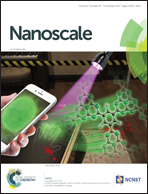Unraveling current hysteresis effects in regular-type C60-CH3NH3PbI3 heterojunction solar cells
Abstract
Comprehensive studies were carried out to understand the origin of the current hysteresis effects in highly efficient C60-CH3NH3PbI3(MAPbI3) heterojunction solar cells, using atomic-force microscopy, transmittance spectra, photoluminescence spectra, X-ray diffraction patterns and a femtosecond time-resolved pump–probe technique. The power conversion efficiency (PCE) of C60-MAPbI3 solar cells can be increased to 18.23% by eliminating the point (lattice) defects in the MAPbI3 thin film which is fabricated by using the one-step spin-coating method with toluene washing treatment. The experimental results show that the point defects and surface defects of the MAPbI3 thin films can be minimized by varying the dropping time of the washing solvent. The point defects (surface defects) can be reduced with an (a) increase (decrease) in the dropping time, resulting in an optimized dropping time for obtaining the defect-minimized MAPbI3 thin film deposited on top of the C60 thin film. Consequently, the formation of the defect-minimized MAPbI3 thin film allows for high-efficiency MAPbI3 solar cells.



 Please wait while we load your content...
Please wait while we load your content...